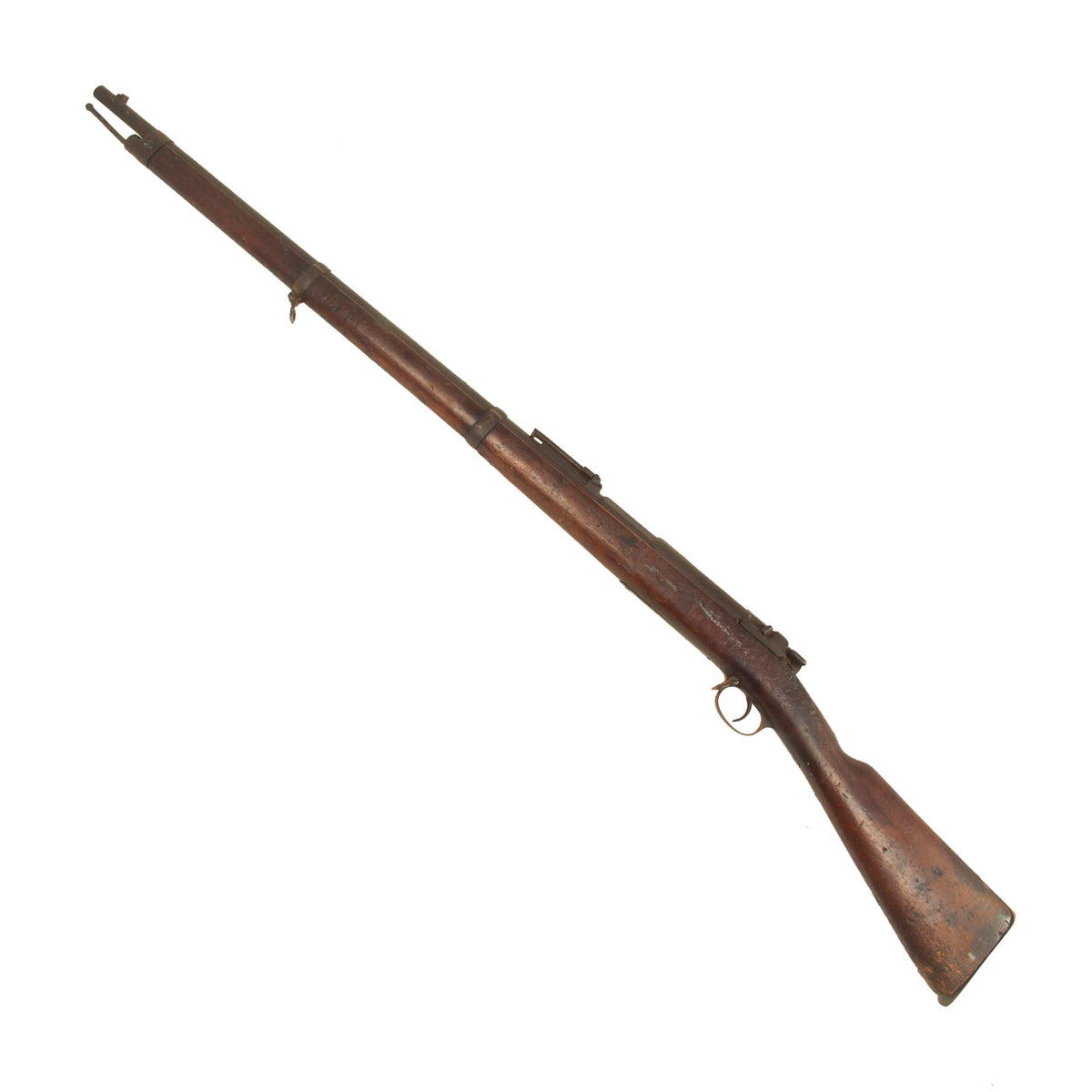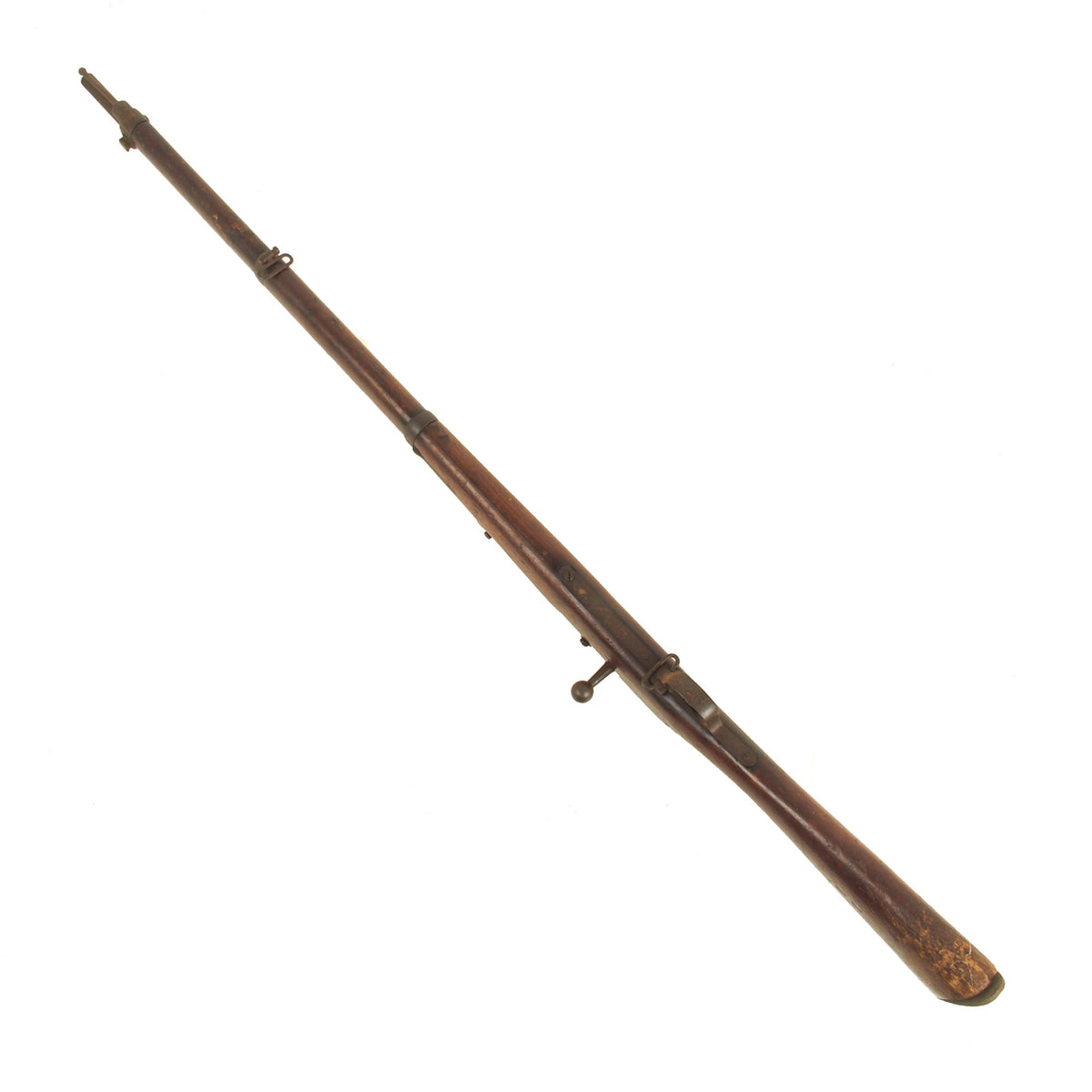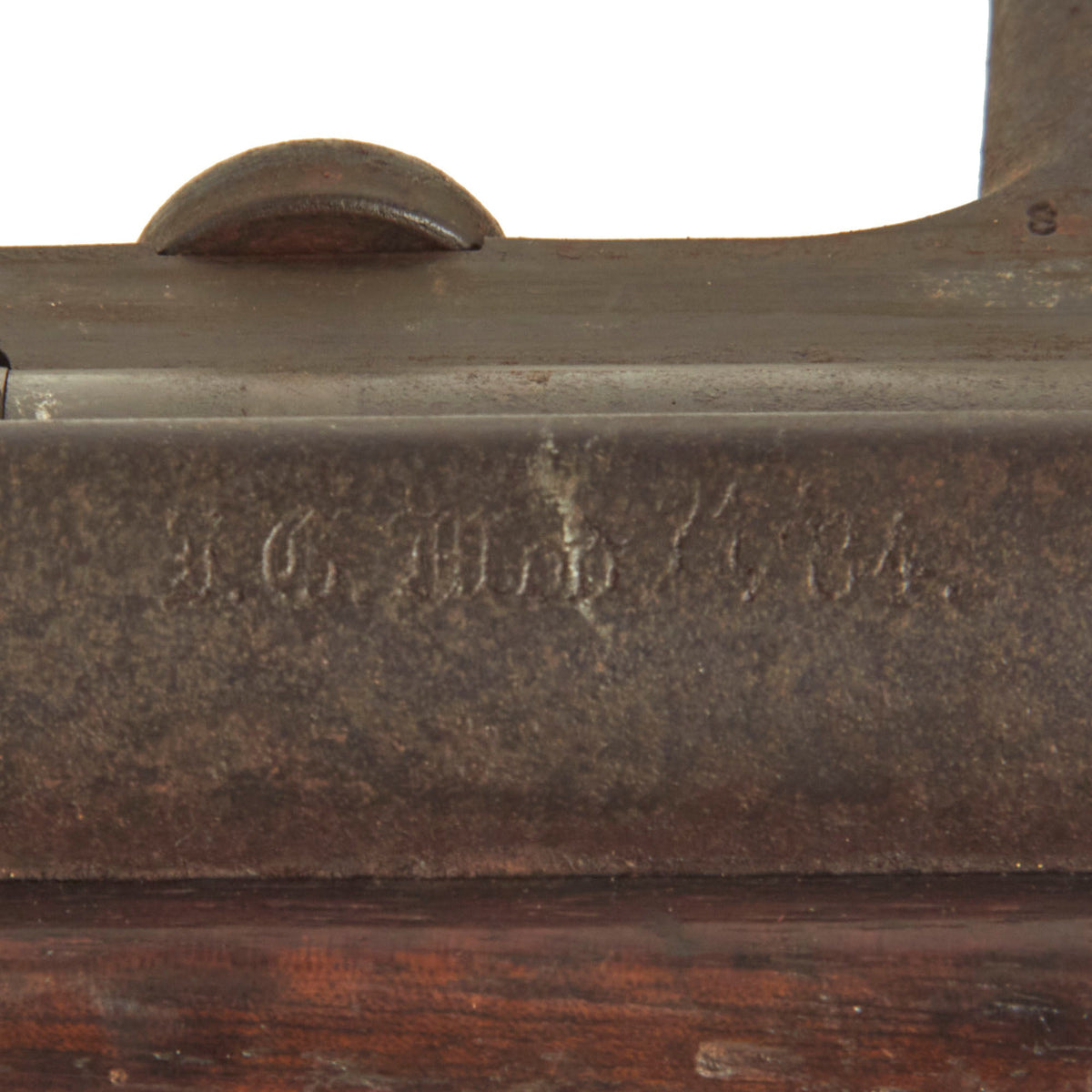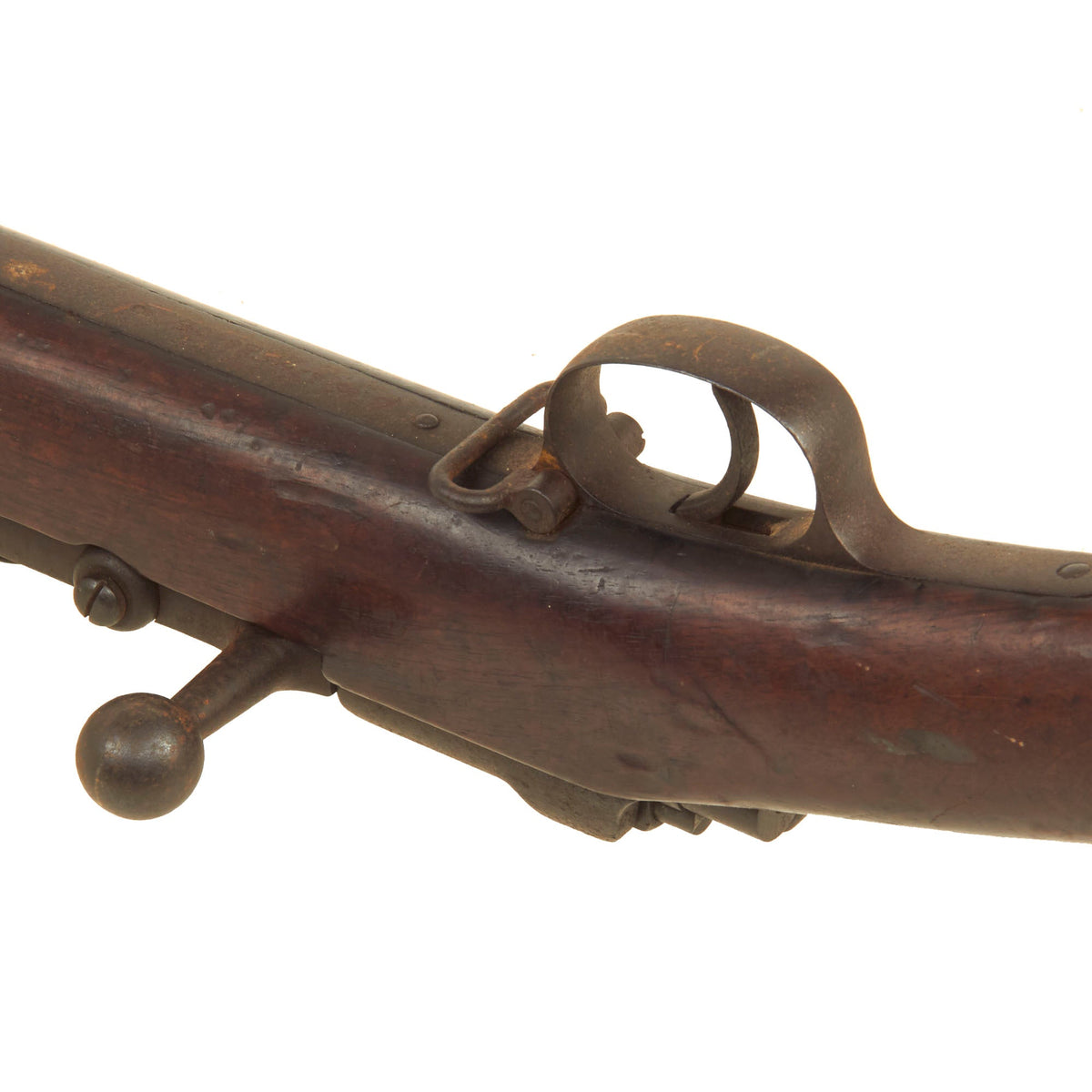Original German Mauser M1871/84 Rifle by Spandau Dated 1887 in Grade 2 “As Found” Condition – Serial 810 Original Items
$ 695,00 $ 208,50
Original item: One of a Kind. Over the years, IMA has purchased many collections and groups of antique guns, in which case we need to take all of them, as we did in Nepal. While these collections were generally full of guns that relatively good condition, they also had some that were less complete and unfortunately would take more restoration time than we were able to give them. We kept them in storage, possibly for future products, but have now decided to offer these “As Found” antique firearms to our customers as restoration projects. These are all original and as we received them, except for cleaning the dirt and grime off the exterior.
Please note that these are still real antique guns, and are being sold in “As is” condition at a significant discount from what they would sell at if we were to fully restore them. We will do our best to photograph and describe them and know that our customers will know exactly what they are getting. Some of these, such as this example, look to have possibly been project or parts guns, and are missing a significant amount of parts. These are being sold in “Grade 2” condition, and on these ALL SALES ARE FINAL.
This is a very nice Grade 2 “As Found” example of the Mauser Model 1871/84 rifle, the first Magazine rifle widely used by the German Empire. The rifle is covered with Imperial German inspection and acceptance markings. The serial number 810 is present on the receiver, barrel, and bolt, while shortened number 10 is visible on many other components, though others are too rusted to read. This may in fact be an “ALL MATCHING” example, but there is no way to verify this.
The receiver is dated 1887. on the right and marked I. G. Mod. 71/84. on the opposite side in “Black Letter” typeface. The top of the chamber is marked Crown over SPANDAU, for the Prussian (and later Imperial) Spandau arsenal in Berlin, a storied production plant that would produce weapons up until 1919, including the famous MG08 Maxim. Below this is the Crown over FW proof for Kaiser Wilhelm I, who used this cypher during his reign 1861-1888. Next to this is a 11 designation, giving the bore diameter in millimeters.
The butt plate tang is marked with regimental designation B. 6. R. 10. 8., for the 6th Royal Bavarian Infantry “Emperor William, King of Prussia” Regiment, first raised 18 June 1725 and garrisoned in Amberg. It was part of the III Royal Bavarian Corps.
This gun is most likely a WW1 Veteran’s “bring back” souvenir. Great quantities of these 71/84 Rifles were pressed into service in WW1 since great piles of them had been put into storage in 1888 with the introduction of the M-1888 7.92mm German Commission Rifle.
Condition Notes:
– Overall condition shows significant oxidation on the metalwork, with some more advanced rust in areas.
– The action actually cycles well, with a functional magazine cutoff.
– The bore shows fouling and oxidation, with some areas of bright finish shown. Rifling is definitely still present.
– Stock shows wear and staining from oxidation, but still has relatively good cartouches. The butt stock has some damage and wear, and the butt plate looks to have been very rusty at one point.
This is a chance to add a very nice Grade 2 “As Found” used Mauser rifle to your collection. Ready to hang on the wall and display! This could also be the start of a great restoration project, or parts for another!
Please make sure to look at all the high resolution (2000×2000) pictures before purchasing, as ALL SALES ARE FINAL.
Specifications:-
Year of Manufacture: 1887
Caliber: 11x60mmR Mauser
Cartridge Type: Centerfire Cartridge
Barrel Length: 32 inches
Overall Length: 51 Inches
Action type: Bolt-Action
Feed System: 8 Round Tubular Magazine
Originally adopted as the Gewehr 71 or Infanterie-Gewehr 71, or “Infantry Rifle 71 (“I.G.Mod.71” was stamped on the rifles themselves) this was the first rifle model in a distinguished line designed and manufactured by Paul Mauser and Wilhelm Mauser of the Mauser company, and later mass-produced at Spandau arsenal.
Paul Mauser developed his bolt-action rifle from 1866 to 1871. During 1870-71 trials with many different rifles took place, with the “M1869 Bavarian Werder” being the Mausers’ chief competitor. The Mauser was provisionally adopted on 2 December 1871, pending the development of an appropriate safety. With support from the government’s Spandau arsenal, the improvements to the safety mechanism were completed and the rifle was formally accepted on 14 February 1872 as Infantry Rifle Model 1871 by the German Empire excluding Bavaria. The action was not based on its predecessor, the Dreyse needle gun which had seen service during the Franco-Prussian War of 1870-71, and which was found to have a number of weaknesses.
The now well known Mauser “wing” type safety lever was developed for the Gewehr 71. The Gewehr 71 is a conventional looking bolt action chambered in 11mm using black powder cartridges. The action included only a bolt guide rib as its single locking lug, locking forward of the receiving bridge. The original design was a single-shot. The design was updated in 1884 with an 8-round tubular magazine designed by Alfred von Kropatschek, making this Germany’s first repeating rifle. This version was designated the Gewehr 1871/84. A version of this repeater was adopted by the Ottoman Empire. Designated the M1887, it differentiated from the M71/84 in that it had a side mounted cleaning rod, a second locking lug on the rear of the bolt, and it was in caliber 9.5×60mmR, which Paul Mauser touted as the most efficient (black powder) cartridge. In the early 20th century a few were converted to 7.65×53mm smokeless by the arsenal in Ankara.
NOTE: International orders of antique firearms MUST be shipped using UPS WW Services (courier). USPS Priority Mail international will not accept these. International customers should always consult their country’s antique gun laws prior to ordering.
Fast Shipping with Professional Packaging
Thanks to our longstanding association with UPS FedEx DHL, and other major international carriers, we are able to provide a range of shipping options. Our warehouse staff is expertly trained and will wrap your products according to our exact and precise specifications. Prior to shipping, your goods will be thoroughly examined and securely secured. We ship to thousands clients each day across multiple countries. This shows how we're dedicated to be the largest retailer on the internet. Warehouses and distribution centres can be located throughout Europe as well as the USA.
Note: Orders with more than one item will be assigned a processing date depending on the item.
Before shipping before shipping, we'll conduct a thorough inspection of the items you have ordered. Today, the majority of orders will be delivered within 48 hours. The delivery time will be between 3-7 days.
Returns
The stock is dynamic and we cannot completely manage it because multiple stakeholders are involved, including our factory and warehouse. So the actual stock may alter at any time. It's possible that you may not receive your order once the order has been made.
Our policy is valid for a period of 30 days. If you don't receive the product within 30 days, we are not able to issue a refund or an exchange.
You can only return an item if it is unused and in the same state as the day you received it. You must have the item in its original packaging.
Related products
Uncategorized
Uncategorized
Uncategorized
Uncategorized
Uncategorized
Uncategorized
Angolan Rebel 1970s era 60mm Inert Display Mortar from Angolan Civil War Original Items
Uncategorized
Uncategorized
Uncategorized
Australian WWII Owen MK1 Machine Carbine SMG Custom Fabricated Replica with Sling Original Items
Uncategorized
Uncategorized
Uncategorized
Uncategorized
Uncategorized
Band of Brothers ORIGINAL GERMAN WWII Le. F.H. 18 10.5cm ARTILLERY PIECE Original Items
Uncategorized
Uncategorized













































































